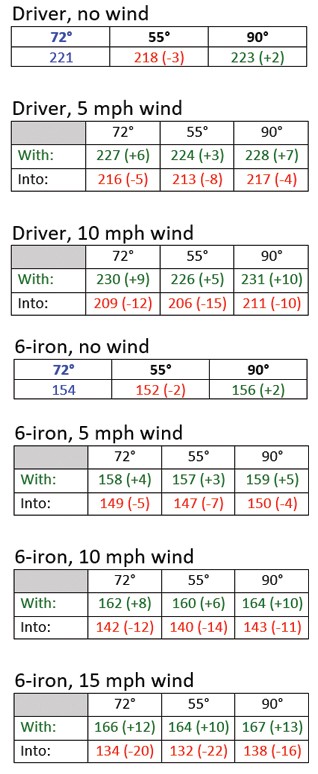Product Spotlight – OnCore Golf
 Buffalo, New York-based OnCore Golf is now a proud partner of the USGTF. Offering below-wholesale PUD pricing on golf balls to all USGTF members.
Our high-performance golf balls are engineered for golfers of all skill levels and swing speeds. A technology company at our “core,” we’re the first ball manufacturer to offer a proprietary perimeter-weighted design that results in lower drive spin rates, tighter dispersion and extended aerodynamic lift.
Our three-ball lineup includes the high-compression VERO X1, award-winning mid-compression ELIXR and low-compression AVANT 55. The VERO X1 is a technological marvel, sporting a metal-infused mantle and enhanced perimeter-weighting yielding the highest allowable velocity off the club face and increased distance for every club in the bag.
VERO X1 was tested alongside Titleist Pro V1 and Pro V1x and outperformed the dynamic duo in golf equipment review website Golf EQ’s driver and iron testing. It also finished atop the composite rankings with a total Golf EQ score of 372.68 versus 362.26 for ProV1 and 350.83 for ProV1x. The VERO X1 delivered 60% less side spin, resulting in significantly straighter drives.
To take advantage of this new member benefit, please contact Member Services at member_services@usgtf.com.
Buffalo, New York-based OnCore Golf is now a proud partner of the USGTF. Offering below-wholesale PUD pricing on golf balls to all USGTF members.
Our high-performance golf balls are engineered for golfers of all skill levels and swing speeds. A technology company at our “core,” we’re the first ball manufacturer to offer a proprietary perimeter-weighted design that results in lower drive spin rates, tighter dispersion and extended aerodynamic lift.
Our three-ball lineup includes the high-compression VERO X1, award-winning mid-compression ELIXR and low-compression AVANT 55. The VERO X1 is a technological marvel, sporting a metal-infused mantle and enhanced perimeter-weighting yielding the highest allowable velocity off the club face and increased distance for every club in the bag.
VERO X1 was tested alongside Titleist Pro V1 and Pro V1x and outperformed the dynamic duo in golf equipment review website Golf EQ’s driver and iron testing. It also finished atop the composite rankings with a total Golf EQ score of 372.68 versus 362.26 for ProV1 and 350.83 for ProV1x. The VERO X1 delivered 60% less side spin, resulting in significantly straighter drives.
To take advantage of this new member benefit, please contact Member Services at member_services@usgtf.com.


 By Dillon Fay, USGTF Professional
Kauner Kay is the reigning youth boys (10-13 years old) Amateur Long Drive world champion and a three-time Utah state long drive champion. Teaching the sport of long drive is my emphasis, and Kauner is an absolute grinder! When I started working with him last June, he had a clubhead speed of 115 mph, which is incredibly fast for a kid his age. Since he began working with me, I have got him up to a new high clubhead speed of 143 mph. That is a 28 mph gain in just under a year, and he has a maximum ball speed of 195 mph! Kauner is now 15 years old and hits it farther than every PGA Tour pro, including Bryson DeChambeau.
Simply put, he is the fastest swinging teenager on planet Earth, and he would gladly put that to the test against anyone. He never misses practice and he has his eyes set on redemption this year to win both the junior boys national and world titles. Since he is so far ahead of his competition in the junior division, he is now competing against the men. In the men’s amateur division at the two PLDA (Pro Long Drivers Association) events he has competed in, he has placed 5th and 3rd (missing out on the finals by 5 yards), and had a personal record drive of 377 yards. He got to hit side-by-side and became friends with some of the biggest names in the sport such as Kyle Berkshire (2019 WLD world champion) and Justin James (2017 WLD world champion).
On the tournament-golf side of things, he had the best season of his life last year when he took 3rd in a local PGA junior championship and shot a personal record twice in competition, including a final-day 73 as a freshman at the Utah high school playoffs to help him finish individually in the top 10 in the state.
By Dillon Fay, USGTF Professional
Kauner Kay is the reigning youth boys (10-13 years old) Amateur Long Drive world champion and a three-time Utah state long drive champion. Teaching the sport of long drive is my emphasis, and Kauner is an absolute grinder! When I started working with him last June, he had a clubhead speed of 115 mph, which is incredibly fast for a kid his age. Since he began working with me, I have got him up to a new high clubhead speed of 143 mph. That is a 28 mph gain in just under a year, and he has a maximum ball speed of 195 mph! Kauner is now 15 years old and hits it farther than every PGA Tour pro, including Bryson DeChambeau.
Simply put, he is the fastest swinging teenager on planet Earth, and he would gladly put that to the test against anyone. He never misses practice and he has his eyes set on redemption this year to win both the junior boys national and world titles. Since he is so far ahead of his competition in the junior division, he is now competing against the men. In the men’s amateur division at the two PLDA (Pro Long Drivers Association) events he has competed in, he has placed 5th and 3rd (missing out on the finals by 5 yards), and had a personal record drive of 377 yards. He got to hit side-by-side and became friends with some of the biggest names in the sport such as Kyle Berkshire (2019 WLD world champion) and Justin James (2017 WLD world champion).
On the tournament-golf side of things, he had the best season of his life last year when he took 3rd in a local PGA junior championship and shot a personal record twice in competition, including a final-day 73 as a freshman at the Utah high school playoffs to help him finish individually in the top 10 in the state.
 The winner of the 2019 Harvey Penick Trophy for Excellence in Golf Teaching, Bower “Bo” Harris from Knoxville, Tennessee, certainly has a lot to be proud of. A 10-year teaching veteran, Harris teaches at Williams Creek Golf Course in Knoxville, where he has helped scores of golfers lower their scores, including scholastic golfers who are achieving success. Harris also uses technology such as Foresight Sports’ GC2, Gen i1 putting monitor and Swing Catalyst. In addition to his status as a USGTF Certified Golf Teaching Professional, Harris also holds other certifications that have allowed him to become one of the most sought-after teachers and coaches in the Knoxville area.
He also coached four medal winners in the 2012 Special Olympics, coached high school golf and, in his words, Helps underprivileged youth, veterans, and stroke victims with discovering and cultivating a passion for golf.” Harris is married to his wife Anya and they have a son, George.
The winner of the 2019 Harvey Penick Trophy for Excellence in Golf Teaching, Bower “Bo” Harris from Knoxville, Tennessee, certainly has a lot to be proud of. A 10-year teaching veteran, Harris teaches at Williams Creek Golf Course in Knoxville, where he has helped scores of golfers lower their scores, including scholastic golfers who are achieving success. Harris also uses technology such as Foresight Sports’ GC2, Gen i1 putting monitor and Swing Catalyst. In addition to his status as a USGTF Certified Golf Teaching Professional, Harris also holds other certifications that have allowed him to become one of the most sought-after teachers and coaches in the Knoxville area.
He also coached four medal winners in the 2012 Special Olympics, coached high school golf and, in his words, Helps underprivileged youth, veterans, and stroke victims with discovering and cultivating a passion for golf.” Harris is married to his wife Anya and they have a son, George.



 September 20th is the deadline to enter this year’s United States Golf Teachers Cup, to be held Monday and Tuesday, October 18-19, at Revere Golf Club in Henderson, Nevada, just outside Las Vegas. A concurrent pro-am will be held for USGTF participants who bring an amateur partner. The entry fee of $495 per person includes two rounds of tournament golf, range balls before play, prizes, an awards ceremony and a closing luncheon. To enter, please visit
September 20th is the deadline to enter this year’s United States Golf Teachers Cup, to be held Monday and Tuesday, October 18-19, at Revere Golf Club in Henderson, Nevada, just outside Las Vegas. A concurrent pro-am will be held for USGTF participants who bring an amateur partner. The entry fee of $495 per person includes two rounds of tournament golf, range balls before play, prizes, an awards ceremony and a closing luncheon. To enter, please visit  By Mark Harman
Normally at The Open in the United Kingdom, wind, temperature and rain play a role on at least one of the days. But this past July at Royal St. Georges in the southeast of England, blue skies and calm winds ruled all four days. How much of an effect does wind and temperature have on the playing of our game?
Using Foresight Sports’ GC Quad and simulation technology, we can provide somewhat of an answer. The example here is a golfer who hits the ball slightly longer than the average male golfer. Into a 10 mph wind, a golfer can expect to lose approximately 12 yards of carry distance with a driver, while downwind the gain is about 9 yards. At the professional level these yardages are both going to be slightly to somewhat longer. Of course, a lot depends upon the launch angle and spin rate of the drive, too, but in general these numbers are going to be pretty much what we see. You can also see that a headwind has a slightly greater effect on distance than does a trailing wind.
Let’s use a 6-iron as an example. Into a 10 mph wind, the loss of carry distance will be about 12 yards, while downwind the gain will be about 8 yards. Into a 15 mph headwind, the distance loss from no wind is 20 yards, and the gain from a 15 mph trailing wind increases only 4 yards to 12 yards total. Again, this is further proof a headwind affects ball flight to a greater degree than does a trailing wind.
What about temperature? According to the technology, the difference in carry distance between a drive hit in 55° F and 90° F is only about 5 yards. So that doesn’t seem very significant. The difference in 6-iron carry varies only 4 yards, although at the higher skill levels a good player will notice this. Wind and temperature are elements that do affect the playing of the game and offer unique challenges on their own. Tom Watson embraced the challenge while other professionals loathed it. Our mental attitude towards different conditions undoubtedly play a greater role in our playing success or failure than do the actual conditions themselves.
By Mark Harman
Normally at The Open in the United Kingdom, wind, temperature and rain play a role on at least one of the days. But this past July at Royal St. Georges in the southeast of England, blue skies and calm winds ruled all four days. How much of an effect does wind and temperature have on the playing of our game?
Using Foresight Sports’ GC Quad and simulation technology, we can provide somewhat of an answer. The example here is a golfer who hits the ball slightly longer than the average male golfer. Into a 10 mph wind, a golfer can expect to lose approximately 12 yards of carry distance with a driver, while downwind the gain is about 9 yards. At the professional level these yardages are both going to be slightly to somewhat longer. Of course, a lot depends upon the launch angle and spin rate of the drive, too, but in general these numbers are going to be pretty much what we see. You can also see that a headwind has a slightly greater effect on distance than does a trailing wind.
Let’s use a 6-iron as an example. Into a 10 mph wind, the loss of carry distance will be about 12 yards, while downwind the gain will be about 8 yards. Into a 15 mph headwind, the distance loss from no wind is 20 yards, and the gain from a 15 mph trailing wind increases only 4 yards to 12 yards total. Again, this is further proof a headwind affects ball flight to a greater degree than does a trailing wind.
What about temperature? According to the technology, the difference in carry distance between a drive hit in 55° F and 90° F is only about 5 yards. So that doesn’t seem very significant. The difference in 6-iron carry varies only 4 yards, although at the higher skill levels a good player will notice this. Wind and temperature are elements that do affect the playing of the game and offer unique challenges on their own. Tom Watson embraced the challenge while other professionals loathed it. Our mental attitude towards different conditions undoubtedly play a greater role in our playing success or failure than do the actual conditions themselves.
 Cobra Golf, a longtime industry partner of the USGTF, features products and innovations that are among the best in the business. With brand ambassadors such as Rickie Fowler, Lexi Thompson and Bryson DeChambeau, Cobra has a significant following and an identity that makes it among the most “hip” of brands.
Cobra offers all USGTF members in good standing a 20% personal use discount off the wholesale price on all its products. To take advantage of this offer, inquiries on pricing should be directed to
Cobra Golf, a longtime industry partner of the USGTF, features products and innovations that are among the best in the business. With brand ambassadors such as Rickie Fowler, Lexi Thompson and Bryson DeChambeau, Cobra has a significant following and an identity that makes it among the most “hip” of brands.
Cobra offers all USGTF members in good standing a 20% personal use discount off the wholesale price on all its products. To take advantage of this offer, inquiries on pricing should be directed to